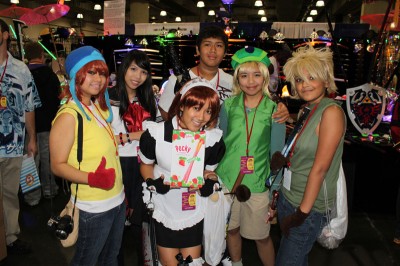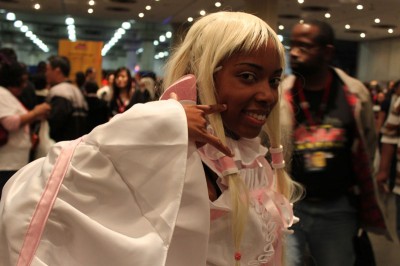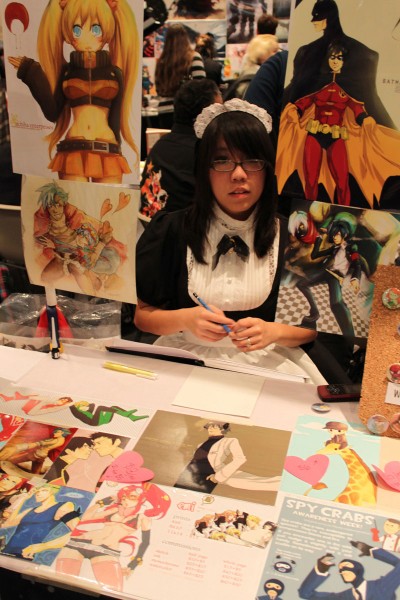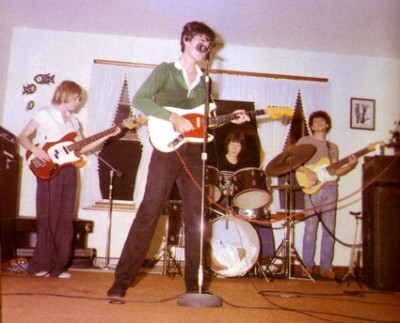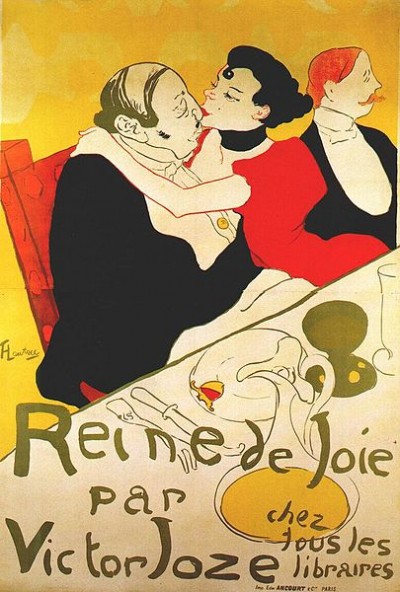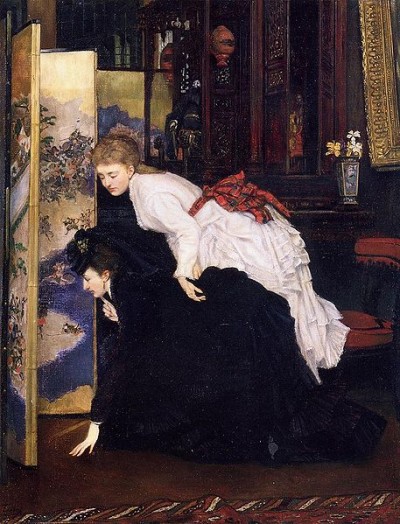The Fall of Manga: Huh?
Above: I’m sorry son, you’ll have to move to the back because these fierce fangurls now own comic book fandom. Photo by Christian Liendo.
I just read the article Trends in 00s from Comic Book Resources was blown away when coming across the following mislabled “trend”:
The Rise and Fall of Manga George Tramountanas: At the beginning of this decade, manga was on the rise. Everyone was reading the little “backwards books” and publishers were trying to figure out how to hop on this zeitgeist. Since then, several American manga publishers have either had to reduce their output or have gone out of business. I guess I wouldn’t actually say that manga has “fallen,” but it’s definitely not as prominent as it was in the early ’00s. As for reasons behind this – I have no idea. I don’t know if it was an overabundance of material, or if fans are getting their manga digitally now (I understand lots of Japanese kids are reading manga in a digital format). In any case, it’s something I’ll keep watching – and reading!
I was sort of surprised to read this as I didn’t see the decade as a “rise and fall” but rather just a “rise”. Tramountanas is on the money that some publishers went under and some cut back, but what he missed the boat on was that occurred as a result of the recession hitting and the field maturing into something real.
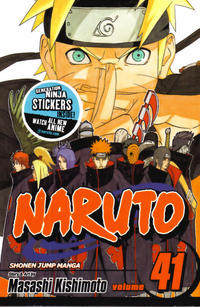 Making matters worse the point is illustrated with a cover of Naruto and the dismissive line “Titles like “Naruto” dominated the charts” which implies that this is somehow a fad driven by one or titles. But what Tramountanas doesn’t seem to get is that Naruto just created a new generation of young comic book and animation fans who aren’t going to grow up caring about Marvel or DC Comics.
Making matters worse the point is illustrated with a cover of Naruto and the dismissive line “Titles like “Naruto” dominated the charts” which implies that this is somehow a fad driven by one or titles. But what Tramountanas doesn’t seem to get is that Naruto just created a new generation of young comic book and animation fans who aren’t going to grow up caring about Marvel or DC Comics.
But the one thing that struck me about the article which featured four guys was how it represented the boys clubhouse mindset that still sadly dominates the fanbase for American comics. In fact one reviewer almost seems to grasp this but just get there:
Dave Richards: I also work part time at my local library, and the manga bubble doesn’t seem to have burst there. It’s still very huge with our teenage patrons, especially girls. You’ll regularly seen teens check out 10-12 manga books at a time, and there will be long hold lists for the latest volume in a series.
I think the problem is that most American comic book fans have only a passing a knowledge of anime and manga fandom. They see it as this other world that just popped up over night, but the reality is that it’s been something that has been building up since the 70s. In fact manga publishing in the United States really got started in the 90s, it didn’t just come from no where at the start of this decade. The other reality is that as a fandom it didn’t grow out of male dominated comic book shops which had a boys clubhouse feeling: So you’ll find manga fans at bookstores as opposed to the shrinking number of comic book stores.
In fact my gut feeling is that this decade was more about the fall of American comics — in spite of the boom of the decade comic book stores continued to disappear like an endangered species. But that was just a small part of a bigger story which is the death of print. A good example of the death of print is that newsstands which use to be a great mainstream venue for DC and and Marvel are disappearing and shrinking.
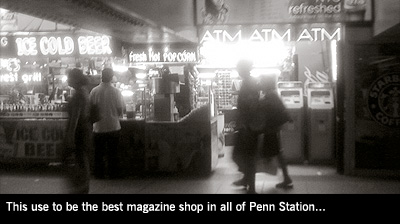
I watched this phenomena myself as the largest magazine shop in Penn Station shrunk their store to less than 50% of the real estate they had before. And sadly the comic book selection they had went down to 25% of what it had been before. And making matters worse the few titles that were shown were mostly based on film properties like Star Wars. You could see from this why Marvel was purchased by Disney — the real value of the company was in have intellectual property for films. The books themselves had become a sad sideline.
But getting back to manga I think the real story was “The Rise of Women Comic Book Readers” which is what manga represents in the long term. The generation of ladies who are leading the trend grew up on shows like Sailor Moon back in the 90s so their path into comic books wasn’t through the dreaded comic book store but through anime cons. This is also a generation that has grown up with the net, so Amazon.com (or even Amazon.co.jp) is a service that has always been in existence.
Above: A Chobits fangurl at the New York Anime Festival 2009, photo by Christian Liendo.
While many of these fangurls self identify as hardcore manga fans there’s an even larger base of casual fans who just read the stuff. This slice of fandom has also grown up with media properties like Star Wars and Buffy which have a much broader appeal than the caped heroes genre. By the way this isn’t to say that there aren’t women that are into Marvel or DC, there are — but with manga fandom the ladies are actually running the show! And from where I stand this is a great thing because not only is it shaking up the industry, but it’s overdue by 40 years.
A side story here is that manga is leading the way to getting kids to come into libraries. By the way the kids who come in for the manga eventually start to read graphic novels — and better yet: fiction! In fact the most exciting thing I’m seeing is the export of light novels from Japan which are short easy to read fiction books that have a large full page illustration every few pages. As someone who grew up reading science fiction novels (which is a genre in a sad state) the very thought of teens picking up a book that’s 80% text makes me downright giddy.
Above: Artists Alley at the New York Anime Festival 2009, photo by Christian Liendo.
And why is this? Because these kids are going to shortly grow up shortly and create their own comic books. In fact another lost story of the last decade was the rise of OEL which is original English-language manga. This started back in the 90s with Ninja High School thanks to Antarctic Press, but this exploded over the last few years with publishers like Tokyopop and titles like Megatokyo. In fact if you want to meet the next generation of American comic book artists just go the artists alley section of any anime convention, it’s a stark contrast to the similar graying aisles you’ll find at traditional comic book cons (which isn’t to say that I don’t love those old timers, because I do).
Above: These unlikely dorks are about to reinvent rock (and what’s with that chick on the guitar!) — a photo of the Talking Heads in the 70s.
To me manga reminds me a great deal of punk rock: By the 70s mainstream rock had become very mainstream filling stadiums, but it wasn’t speaking to a core audience of early adopters who were looking for something more cutting edge. And then suddenly from places like CBGB or far off locations like London this new genre emerged which would bring in a new look but reinvent an old sound. The result? Punk would revitalize rock and the echos of that era would reverberate through the end of the century. I think with manga you’re looking at a similar movement that will have long term consequences.
Above: Manga artist — err, Henri de Toulouse-Lautrec doing his thing in 1892.
By the way it should be noted that this isn’t the first time that Japan has influenced western art. In fact if you look back at the Impressionism art movement of the 19th century you see that many of those artists were heavily influenced by Japanese prints. These prints from Japan had come into France as mere wrapping paper for imported goods. However French artists who were hungry for something new became avid collectors of the wrapping paper, and as a result you can see the influence of Japan in the works of artists like Edgar Degas who incorporated never seen before concepts like off guard poses and the use of dramatic negative space.
In fact in an ironic twist just as the word anime is actually French, there’s a French term for the impact of Japanese prints: Japonism (also sometimes known as Japonisme). If you want to think about it this is the French version of original English-language manga but applied to early modern art. By the way the influence of Japonism doesn’t end with impressionism — but would also impact later art movements like Art Nouveau and Cubism.
Above: A painting by James Tissot showing Victorian era fangurls from 1869 checking out the latest from Japan.
Special thanks to Deb Aoki who pointed this story out to me!















